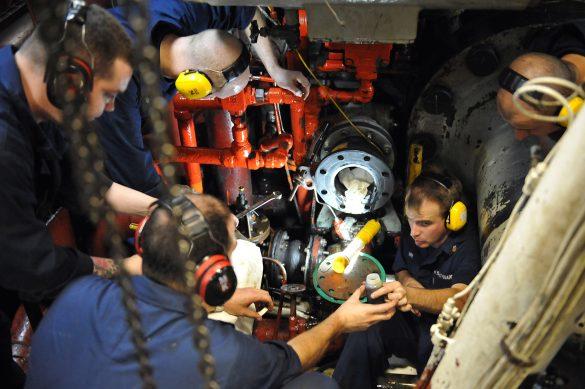 The engineering industry is a complex field of expertise, and it is involved in multiple aspects of our daily lives, from heating our homes to keeping us connected to the internet. Countless parts of our everyday lives are supported by engineering. But as the times change, more is being demanded from engineers. We’re going to take a look at how the industry will progress, with a key focus on the challenges that lay ahead for the industry and those who keep it in motion.
The engineering industry is a complex field of expertise, and it is involved in multiple aspects of our daily lives, from heating our homes to keeping us connected to the internet. Countless parts of our everyday lives are supported by engineering. But as the times change, more is being demanded from engineers. We’re going to take a look at how the industry will progress, with a key focus on the challenges that lay ahead for the industry and those who keep it in motion.
Eco-friendlier engineering
Engineers are facing new regulations which outline the need to become eco-friendlier. As a result of government targets, the engineering sector must strive towards reducing its carbon output. Individual countries have outlined their own strategies for approaching this, to help conserve the world we live in. The UK government has stated it aims to reduce domestic carbon emissions by at least 80% by 2050, based from the 1990 levels.
Construction is an area of engineering notorious for producing a large amount of carbon. Therefore, it’s a vital area for improvement to be focused on making the engineering behind it as ‘green’ as possible. From planning to building projects, eco-friendly construction engineering is a practice becoming frequently adopted by engineers in the design stages of new developments. From using innovative green materials, using resources effectively to minimise waste, and planning with an adaptability perspective, engineers will continue to incorporate sustainable practices into construction projects.
Of course, engineering happens beyond the land. Design and development advances have led to clear innovation in the machinery used for construction beneath the world’s oceans too. Subsea machinery is used to target otherwise inaccessible areas to access resources such as oil and gas. They also allow for the implementation of subsea cables for purposes such as WiFi connectivity. The underwater vessels responsible for the maintenance of these cables, such as ROVs and trenchers, are becoming increasingly streamlined to meet the ‘green’ goal when it comes to new construction projects. These new technologies are at the forefront of the world’s biggest engineering expos, showcasing environmentally considerate solutions.
Plugging the STEM gap
Challenges facing engineering will not only affect the industries activities. There are already some evident difficulties for the workforce within the sector. There’s a growing call to tackle the issue of engineering as a gendered vocation, and the current imbalance is impacting those who steer the sector in their everyday vocations. The industry has a lack of diversity, and this is reflected by the fact that only 12% of women out of the 47% which make up the current workforce, are in engineering roles. While STEM (science, technology, engineering, and maths) gaps are evident across the board, the attitudes which fuel them can certainly be resolved.
Organisations such as the Women’s Engineering Society (WES) are leading the way with regular conferences on the topic, as well as highlighting the issue on their own International Women in Engineering Day each year. Since 2017, there’s been an increase of more than 44,000 women in STEM positions, with a further 25% boost in the number of professional women engineers. There are other organisations jumping onto this too, by introducing their own Women in Engineering programmes.
Brexit
The current talent pool for engineers of the future looks set to grow narrower, due to the reliance on international students. As the UK enters a transitional period with the EU, new regulations could leave posts looking sparse. Research by EngineeringUK discovered that there is a high chance that universities could face difficulties when recruiting students from overseas, as well as experiencing a possible drop in funding. International collaborative projects might also take longer, as the UK’s new relationship with the EU looks set to mean more lengthy negotiations due to new restrictions.
The engineering industry has become the key point for introducing change and supporting wider infrastructural development. As a result, it falls onto the shoulders of those within the engineering sector to lead further advancements, taking on the challenge of meeting a widespread goal for reducing the global carbon output, improving workplace diversity, and navigating difficult climates.






